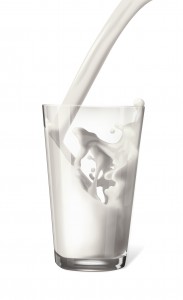 aditional dairy products may be turning in the UK, with sales decreasing, while things are looking considerably more positive for the non-dairy variety, according to findings from market research organisation Mintel.
aditional dairy products may be turning in the UK, with sales decreasing, while things are looking considerably more positive for the non-dairy variety, according to findings from market research organisation Mintel.Mintel said its research showed that fresh dairy cream declined by 2 per cent between 2011 and 2013 to reach 52 million litres in 2013, while volume sales of non-dairy creams increased 12 per cent over the same two year period to reach 19 million litres in 2013.
And it was not just cream where UK consumers were moving on: sales of cow’s milk alternatives had also been whipping up success. Mintel’s research showed how the UK’s dairy tastes were changing as volume sales of other milks (such as soy milk, rice milk and buffalo milk) reached 92 million litres in 2013, marking a staggering 155 per cent increase up on 2011 when 36 million litres were consumed. As well as a boom in cow’s milk alternatives, sales of lactose-free milk had also experienced healthy growth. Indeed, between 2011 and 2013, sales of fresh lactose-free milk surged 55 per cent to reach 17 million litres in 2013.
Plant-based milks considered ‘healthier’
According to Mintel, over one in ten (11 per cent) of UK consumers drink soy milk, 7 per cent drank other cow’s milk alternatives (such as goat’s milk, rice milk or almond milk) and 5 per cent drank lactose-free milk. Around a quarter (27 per cent) of UK consumers agreed that plant-based milk was ‘healthier’ than cow’s milk and almost one in ten (8 per cent) agreed that drinking milk could upset their digestive system and leave them feeling bloated.
“The opposing trends of health concerns over cream’s fat content, price fluctuations and the boost to scratch cooking and baking originally sparked by recession have seen a volatile performance in the cream market in recent years,” said Kiti Soininen, Head of UK Food, Drink and Foodservice Research, at Mintel. “However, sales of dairy alternatives and lactose-free produce have benefitted from increased marketing activity as well as improved availability in terms of variety and distribution,” she said.
“Many consumers may well be turning to dairy alternatives or lactose-free cow’s milk for perceived health reasons as our research shows that a number of people feel drinking milk can upset their digestive system and leave them feeling bloated,” Ms Soininen said. ” And it seems those avoiding dairy will be in good company this summer as tennis superstar Andy Murray has in the past spoken about excluding this from his diet,” she said.
Dairy products
Overall, cream consumption fell from 95 million litres in 2012 to 93 million litres in 2013 – in spite of the fact that three quarters of UK consumers (73 per cent) claimed to have used cream in the past three months.
Volume sales of white milk rose 1 per cent over the same period to reach 4.9 billion litres in 2013. Indeed, milk enjoyed near universal usage in British homes with 98 per cent of UK consumers using it and some 53 per cent of these drinking or using four pints or more per week.
While milk consumption remains high, many UK consumers had reservations about milk production, with only two fifths (42 per cent) agreeing that they trust the dairy industry to fully purify milk. This broke down to 45 per cent of men and 39 per cent of women. Furthermore, showing young consumers’ distrust with the purification process, just three in ten (30 per cent) of under-25s agree with this statement.
Mintel’s research also showed that British consumers’ thirst for an authentic product is strong, with six in ten (62 per cent) agreeing milk packaging should have more information about where the milk came from (e.g. dairy farm or farmer), with this peaking at two thirds (67 per cent) of those in the South West and Wales. Meanwhile, just a third (35 per cent) are convinced that supermarkets are doing enough to support British dairy farmers.





